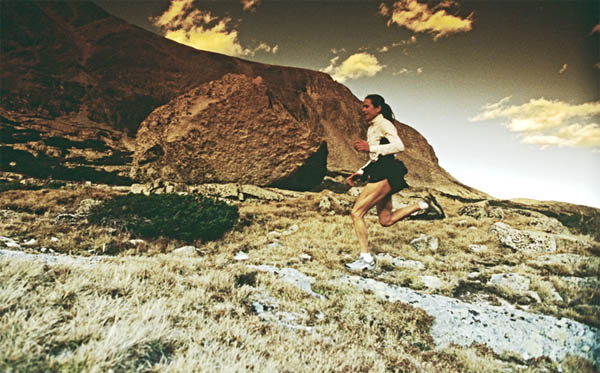
The following except is from Pilates with the Outdoor Athlete Copyright: Lauri Ann Stricker 2007.
Pilates for a Better Stride
Picture the stride of a strong runner. Is it fluid and energy efficient or choppy and wasteful? Chances are it is characterized by vertical alignment from the ears to the ankles, feet moving up and down, relaxed shoulders, and steady breathing. A strong runner stabilizes from the core, moves forward landing on the midfoot, and minimizes up and down, and side-to-side motion. Now envision the stride of a struggling runner. Does she break at the hips, lean too far forward or bounce up and down? Does she run with tense shoulders, clenched fists, a swayed back, or practice shallo breathing? Chances are good that more energy is being expended for more impact. The quality your posture, fitness, and breathing can mean the difference between a fluid and efficient stride, and one that leaves you hobbling. Proper alignment, muscle balance, core strength and awareness are your tools to a stride that is fast and light.
In addition to improving alignment and balance, Pilates improves core strength, providing stability for the pelvis and support for the low back. Running recruits heavily from the hamstrings, hip flexors, and calves. This results in tightness and weakness in the medial quadriceps, adductors, and hip extensors. These muscle imbalances place unequal tension on the cartilage, tendons, and ligaments that support the hips, knees, and feet. Overtime the joints become compromised and unstable. Muscle imbalances and joint instability can also occur from trail running over sloping terrain, running too often, or preferring one leg more then the other as you stride. Muscle imbalances occur not only from the front to back, but also from the left to right. This creates stress all the way into the low back. Flexibility in the legs, hips, torso, and shoulders improves range of motion, and promotes forward lean from the ankles and not the waist. Balanced muscles in the legs and hips maintain the integrity of your joints and reduce risk of injury. By practicing Pilates you will be rewarded with a fluid, energy efficient stride, and more balanced body for years to come.
To effectively implement Pilates into your cross-training, please check out my book: Pilates for the Outdoor Athlete , Fulcrum 2007.

It is the mind itself which shapes the body.


